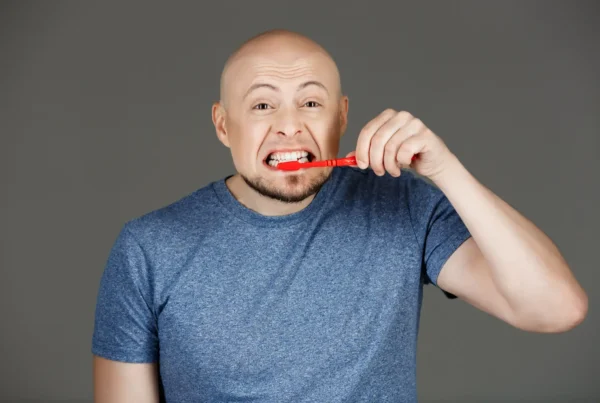
Ameloblastoma is the most common odontogenic tumor and one of the most frequently occurring odontogenic neoplasms. What are the causes and symptoms of ameloblastoma? How can it be treated? You’ll find the answers to these questions in the following article. We encourage you to read on.
What is ameloblastoma?
Ameloblastoma is an odontogenic tumor that arises due to the association between ameloblastoma and the human papillomavirus (HPV) or from an odontogenic cyst. It is also a tumor that is difficult to detect, as it develops slowly and does not cause pain symptoms. Ameloblastoma expands the surrounding bone, and in advanced stages, it destroys the cortical bone and begins to infiltrate nearby soft tissues. There are several types of ameloblastoma, including:
- Multicystic ameloblastoma – this type displaces the roots of adjacent teeth and causes pathological resorption
- Unicystic ameloblastoma – appears as a single radiolucent lesion with no internal structure
- Peripheral/extrabony ameloblastoma – arises in soft tissues, most commonly in the gingiva covering the alveolar processes
Ameloblastomas can develop in either the mandible or the maxilla. Mandibular ameloblastomas are more common, accounting for up to 80% of cases. They typically appear in the posterior part of the mandible, especially around the molars, although they can also affect areas behind all teeth. Maxillary ameloblastomas develop more rapidly and are most often found in the lateral segment near the molars. They tend to spread from the maxillary sinus toward the orbits and the skull base. In rare cases, ameloblastomas may also develop in soft tissues and the mucosa of the alveolar process – these are known as peripheral ameloblastomas.
Read more: Drooling
Ameloblastoma symptoms
Ameloblastoma can grow for several years without causing any pain. However, some patients may report toothache or sinus pain, as well as swelling of the mandibular body, palate, cheek, or gingiva. In later stages of the disease, facial asymmetry or malocclusion may become noticeable. In advanced cases, although rare, pathological fractures of the mandible may occur. Teeth located near the tumor may become mobile or show altered sensation. Patients may also complain of dental crepitus under pressure, poor healing of the post-extraction socket, cheek swelling, nasal obstruction, or poor fit of previously well-fitting dentures.
Causes of ameloblastoma
The following factors may contribute to the development of ameloblastoma:
- Genetic mutations
- Infection with human papillomavirus (HPV)
- Residual dental epithelial remnants
- Keratocystic odontogenic tumor (KCOT)
- Neoplastic transformation of the odontogenic cyst lining
Treatment of ameloblastoma
Ameloblastoma is typically treated surgically. Due to its locally aggressive nature and tendency to infiltrate surrounding structures and recur when not completely excised, it is necessary to perform surgical resection with a safety margin of approximately 0.5–1 cm of healthy tissue. The exact treatment plan is determined individually, based on the type, location, and characteristics of the tumor.
Following resection, reconstruction of the bone continuity is usually performed using grafts harvested from the iliac crest, scapula, or fibula. Another treatment option, though rarely used, is radiotherapy.






